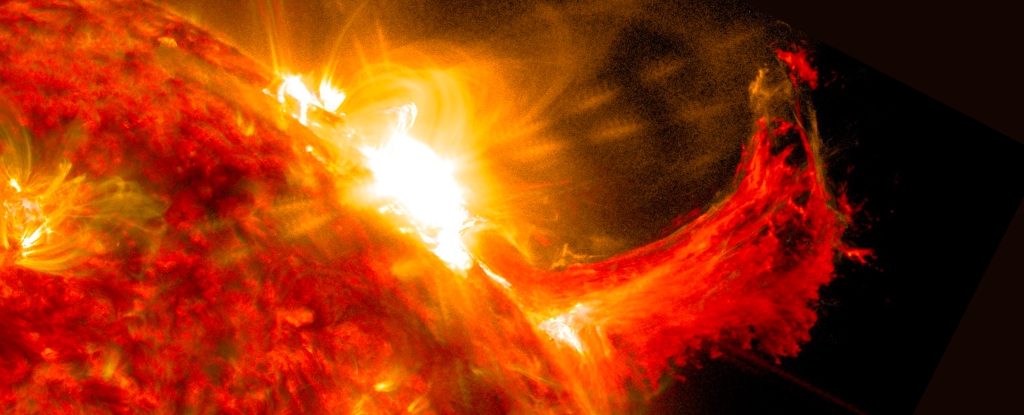

NASA has been working on an AI-based early warning system for solar storms, which could provide the world with a 30-minute notice before a potentially devastating event strikes. Utilizing AI models to analyze solar storm data, the system aims to predict the severity and impact of a solar storm on Earth.
One of the main challenges in developing such a system was the ability to predict where the storm might hit on Earth. However, the deep learning model developed by the researchers, named DAGGER, has the ability to perform quick prediction logic for the entire Earth’s surface area. This combined with the ability to predict the severity and direction of a solar storm event in under a second, makes DAGGER a considerable step forward in predicting and responding to potential hazards from solar storms.
Half of the globe is protected by the Earth’s bulk, commonly referred to as “night,” making local predictions extremely important. DAGGER’s speed and global coverage can provide utility and communication companies with ample time to integrate it into their threat assessment systems before the peak of the Sun’s 11-year solar cycle in 2025.
Previous algorithms took considerable time to predict and provide warnings before a storm hit Earth, but DAGGER’s speed and accuracy make it a significant improvement. The algorithm’s ability to make predictions every minute and perform quick prediction logic is a major step forward in predicting and responding to potential hazards from solar storms. With DAGGER launching on an open-source platform, it can collect ample data as the Sun ramps up to the peak of its solar cycle in 2025.
In conclusion, NASA’s AI-based early warning system for solar storms is a significant step forward in predicting and responding to potential hazards from solar storms. DAGGER’s speed and accuracy make it a considerable improvement over previous algorithms. With DAGGER launching on an open-source platform, it can collect ample data, making it easier for utility and communication companies to integrate it into their threat assessment systems before the peak of the Sun’s solar cycle in 2025.
Cells form the foundation of all living organisms, and gaining insights into their inner workings…
Mosquitoes are not just an irritating nuisance; they are deadly vectors that transmit a range…
In the quest for sustainable living, consumers often hold fast to the belief that glass…
For over a century, the astral mystery surrounding Barnard's Star, a unique red dwarf just…
In the realm of catalysis, particularly in the context of oxygen evolution reactions (OER), understanding…
Recent research has illuminated a groundbreaking connection between blood donation frequency and the health of…
This website uses cookies.